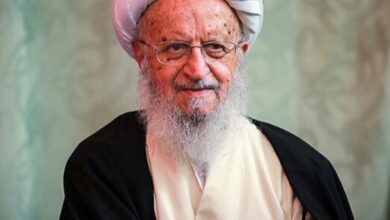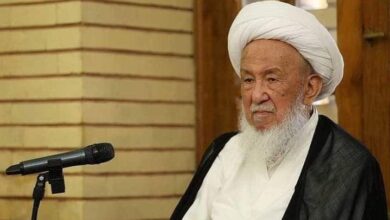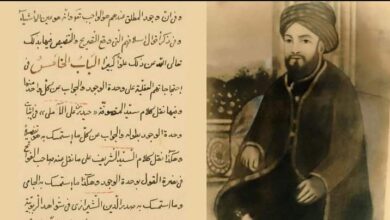Ancient philosophy was a collection of what so-called wise men of ancient times thought about the world, most of which was incorrect. Problems of theology and abstract ideas of ontology were placed under metaphysics, and the poetic speculations about the outside world were collected under physics, which had little in common with today’s rich natural sciences. The same methods were used to address both types of questions and they failed miserably in understanding nature for two thousand years. The foundation of modern natural science was laid after we got rid of these methods and instead started using mathematical reasoning and rigorous experimentation to capture the complexities of nature.
Murtadha Mutahhari describes the etymology of the term ‘metaphysics’ as follows:
“Aristotle (d. 322 BCE) was the first person to discover this discipline as a distinct field of knowledge and gave it a special place among other disciplines. But Aristotle did not give any name to it. After Aristotle, his writings were collected in an encyclopaedic form, and at the time of arrangement, this section was placed after the material related to physics. Since these writings had no common title, the name metaphysics was given to them, indicating what came after the chapters of physics.” (1)
He continues:
“Later, among the modern pseudo-philosophers, this verbal and translation mistake led to an intellectual mistake. A large group of Europeans considered the word metaphysics to be equivalent to supernatural and thought that the subject of this knowledge is things that are outside of the physical world. And now, as we have established, the subject of this knowledge includes nature and beyond nature and ultimately everything that exists.” (2)
Mulla Sadra (d. 1641) also emphasizes the unity of physics and metaphysics and believes that a school of thought that fails in physics, cannot be trusted with its metaphysics. His works are basically an exegesis and appropriation of what Plotinus (d. 270 AD) wrongly speculated. Mulla Sadra was completely out of touch with his contemporaries in the West, like Galileo (d. 1642), Kepler (d. 1630), Descartes (d. 1650), and others, who had started to break free from chains of Greek myths and illusions. His book “Asfar-e-Arbaa” is his major contribution to Neoplatonism, and it has been translated into several languages in recent decades.
The Arabic term “Asfar (أسفار)” is the plural of “sifr (سِفْر)”, and it means large books. In the Holy Qur’an, this word is used for large volumes of books carried by a donkey:
مَثَلُ الَّذِينَ حُمِّلُوا التَّوْرَاةَ ثُمَّ لَمْ يَحْمِلُوهَا كَمَثَلِ الْحِمَارِ يَحْمِلُ أَسْفَارًا ۚ . (سورة الجمعة، الآية 5)
Translation (Yusuf Ali): “The similitude of those who were charged with the (obligations of the) Mosaic Law, but who subsequently failed in those (obligations), is that of a donkey which carries huge tomes (but understands them not).” [62:5]
The modern edition of this book published by Dar Ihya’ al-Turath al-’Arabi from Beirut in 1980’s spreads over three and a half thousand pages, most of which is incorrect and void of any intellectual value. In this book, Mulla Sadra castigates the Shia theologians of the time due to differences in theological opinions and ridicules them for not knowing physics. He writes:
و هم بالحقيقة أهل البدع و الضلال. و قدوة الجهلة و الأرذال شرهم كلهم على أهل الدين و الورع و ضرهم على العلماء. و أشدهم عداوة للذين آمنوا من الحكماء و الربانيين هذه الطائفة المجادلة المخاصمة. الذين يخوضون في المعقولات و هم لا يعرفون المحسوسات و يتعاطون البراهين و القياسات و هم لا يحسنون الرياضيات و يتكلمون في الإلهيات و هم يجهلون الطبيعيات. (3)
Translation: “Indeed, these people are heretics and perversive, the leaders of the ignorant and the vile. All their wickedness is reserved only for the people of religion and piety and their hostility is directed at the scholars only, and their fiercest enmity is against the believers among the sages and the divine saints.
This polemicist and the litigant group delve into the intelligible while they do not know the nature of physical things. They want to practise reasoning and inference even though they haven’t finished the math. They like to discuss theology while they are ignorant of physics.”
Ironically, Mulla Sadra’s own physics, i.e., his understanding of nature, has proven to be totally absurd. His own ideas about motion, light, sky, space and time, symmetry, random processes, nature of life, the chemistry and substance of things, the function of the human brain, diseases, heredity, psychology, love, etc. are nothing but fiction.
For example, he intensely advocates the idea of substantial motion (الحركة الجوهرية), which he himself attributes to the medieval Arabic translation of Enneads – work of Plotinus – known as Theology (الاثولوجيا). (4) We now know that change happens due to the spatial gradient of energy, i.e., external forces, as illustrated by Newton’s second law. In the absence of force or gradient of energy, there is no motion, no change. Therefore, the ripening of an apple is caused by energy gradients produced due to sunlight, temperature, and the chemical energy of the molecules produced by the plant and atmosphere. The substance of an apple is made of divisible molecules bonding together due to supramolecular forces. It ripens when the molecular composition changes under external causes.
Using this knowledge, derived from Newton’s laws, scientists have devised ways to regulate fruit ripening processes and improve yield. On the other hand, the dogma of substantial motion, or intrinsic flux, which was first proposed by Heraclitus (d. 480 BCE) long before Plotinus, has no precise predictability and connetion to real-world phenomena.
Mulla Sadra’s complete failure in physics leaves no room for a cautious believer to trust his metaphysics. Ayatollah Jawad Tehrani (d. 1989) writes:
“When I started to study medieval philosophy, I did not trust all the elders’ wisdom; I had previously understood that modern sciences and contemporary scholars reject the views of ancient philosophers in physics and astronomy. Therefore, whatever I read, I was very cautious about its perception and analysis, and verification of the authenticity of the content, and for this reason, I did not ignore any objection that came to my mind, and that in which I did not have the power to recognize the truth from the false, I did not accept it in blind imitation or good faith. As if I kept reminding myself: those who have made mistakes in natural sciences, how can they be infallible in theology and not make mistakes? And especially when I realized that these philosophers have differences and quarrels among themselves in theological issues, I wondered: How can the truth in the matter be known from their words?
Anyhow, the main theme of my personal story is that since my teenage, by the grace and blessings of Almighty God, I have been a seeker of the truth; But neither Qur’an nor Hadith led me to the monotheism of mystics. Yes, to make sense of their ideas and claims, I had to go to some other realms of thought, other than these.
Rather, I would say: It is not possible for someone who follows the school of Quran and Hadith to contemplate the interpretation of monotheism by mystics!” (5)
Grand Ayatollah Lutfullah Safi Gulpayegani (d. 2022) says:
این حضرات بر اساس تئوری های خود برای ماسوی الله نقشه ای فرضی کشیده بودند و تشکیلات کیهان و افلاک را تعیین کرده و به گمان خودشان نقشه ربط حادث به قـدیم و صـدور کثیر از واحد را نوشـته بودند؛ گویی این که همه جا و در همه تحولات و ادوار عالم با خدا بوده اند و بر این اساس عالم عقول و مجردات را عنوان کرده و سلسـله هایی در نظر گرفته بودنـد که با ظهور علوم و فنون جدیده بطلان بیشتر نقشه هایشان ظاهر شد. راه صواب و مصون از خطر این است که در این امور انسان به اخبار پیغمبر صادق مصدق اکتفا نماید. (6)
Translation: “Based on their theories, these gentlemen had drawn a hypothetical layout for God’s creation and determined how the universe and the planets came into being, and in their own imagination, they had outlined the relation of the accident to the eternal and emanation of multiplicity from the one. It is as if they were with God everywhere and witnessed all the transformation and stages of the universe, and based on this, they proposed the worlds of intellects and abstracts and constructed imaginary concatenations, and with the advent of modern science and arts, the invalidity of their theories became even more obvious. The right way is for a person to rely on the narrations of the truthful and authenticated Prophet (PBUH) in matters of faith.”
See also: Mulla Sadra and dehumanisation of women
See also: The Greco-Muslim philosophy is neither compatible with Islam nor science – Grand Ayatollah Ishaq Fayadh
References:
1. Murtadha Mutahhari, “kuliyat-i ulum-i islami”, vol. 1 (Mantiq – Falsafa), page 135, 1381 Hijri Shamsi.
2. Murtadha Mutahhari, “kuliyat-i ulum-i islami”, vol. 1 (Mantiq – Falsafa), page 136, 1381 Hijri Shamsi.
3. Mulla Sadra, “al-hikma al-muta’aliya fil-asfar al-‘aqliyya al-arba’a”, vol. 1, page 363, dar ihya’ al-turath al-’arabi, Beirut, 1981.
4. Mulla Sadra, “al-hikma al-muta’aliya fil-asfar al-‘aqliyya al-arba’a”, vol. 3, page 111, dar ihya’ al-turath al-’arabi, Beirut, 1990.
5. Ayatullah Jawad Tehrani, “arif wa sufi che mi guyand”, page 323, Afagh publications, Tehran, 1390 Hijri Shamsi.
6. Grand Ayatullah Safi Golpayegani, “sharh-i hadith-i arz-i deen”, page 107, Qom, 1394 Hijri Shamsi.



